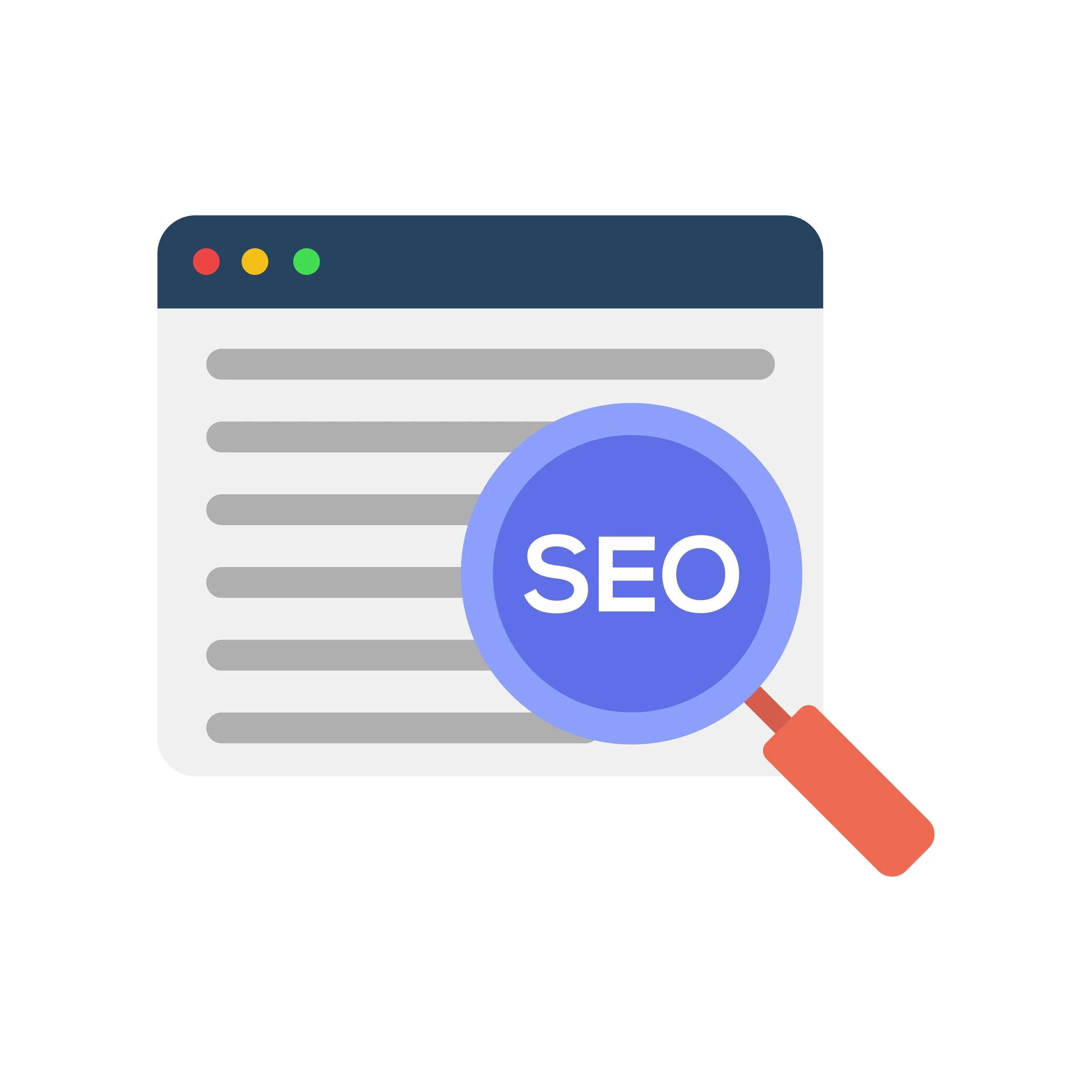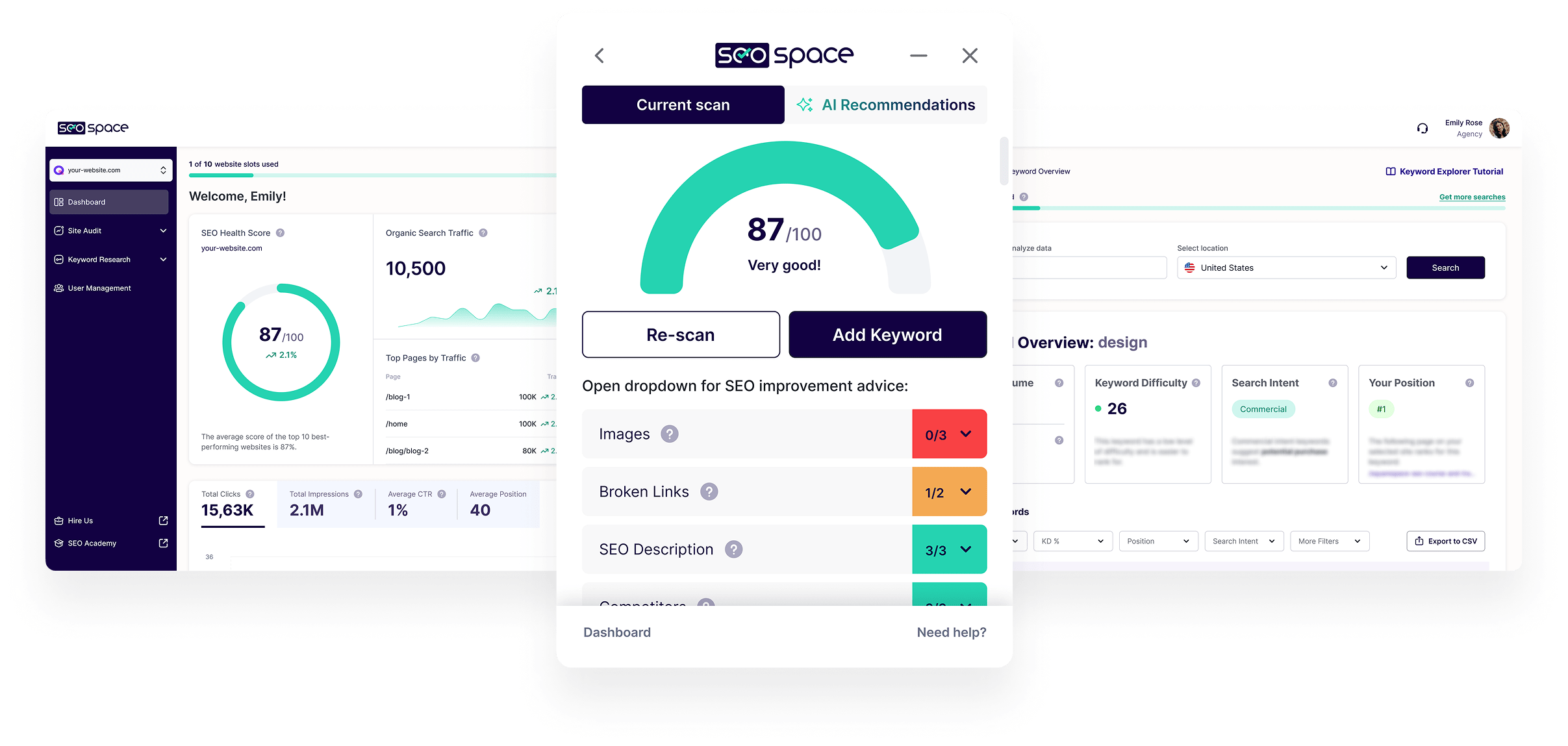You did it! You’ve put so much love, time, and effort into crafting a beautiful website. The design looks great, the user interface is easy to use, and it truly reflects your brand wonderfully. There's just one little issue: no one is stopping by. It seems like you've created an amazing, cutting-edge store right in the heart of a desert.
This is a frustratingly common problem. A beautiful design is crucial for converting visitors into customers, but it doesn’t do anything to attract them in the first place. If your website is a ghost town, it’s not because your brand is lacking or your services aren’t valuable. It’s almost always a problem with Search Engine Optimization (SEO).
SEO is the art and science of making your website visible to search engines like Google. When you don't have it, people hardly notice you. If your attractive website isn't getting any visitors, don't worry! This tutorial will help you figure out why and provide a solution.
Part 1: The Diagnosis - Why Is Your Website a Ghost Town?
There are a number of fundamental problems that might lower a website's search engine rankings. Now we will dissect the most typical offenders.
1. Critical Technical SEO Flaws: Technical SEO refers to the infrastructure of your site. If search engines can't easily crawl, understand, and index your pages, they won't show them to users.
Slow Page Speed: If your site takes more than a few seconds to load, people (and Google) will become impatient. A lot of the time, it's because of big pictures and bad coding.
Bad mobile experience: More than half of all online traffic originates from mobile devices. Google's mobile-first indexing will haunt you if your site isn't responsive and simple to use on a smartphone.
Crawlability problems: A "robots.txt" file might be stopping search engines from crawling your site by mistake, or you could have broken links and "404 not found" problems that make it impossible for search engine crawlers to get to your site.
2. A Bad On-Page SEO Plan: On-page SEO is the process of making the content on your pages better so that search engines can understand what you're about.
No Keyword Research: Are you writing about things that your potential buyers are really looking for? It will be hard for you to rank if you are guessing at keywords or going for phrases that are too competitive.
Missing or poorly optimized metadata: Each page has a meta title and description. These are the title and summary that show up when you search. Click-through rates will go down if they are generic, missing, or don't include your target term.
Bad Content Structure: Users and search engines need to be able to readily understand your content, thus it has to be logically arranged using headers (H1, H2, H3).
3. No authority outside of the page: Off-page SEO is when you do things outside of your own website to change your rankings.
Not enough backlinks: Backlinks are links from other websites to yours. They are like votes of confidence. Search engines won't think your site is trustworthy or authoritative if it doesn't have good backlinks from reliable sites.
Part 2: The Prescription—Your Plan for Getting More Traffic
Now that you know what's wrong, here's how to make it right. This is your strategy on how to fix problems.
Step 1: Use SEOSpace to do a thorough SEO audit
You need to know precisely what's wrong before you can repair it. It's almost hard to check for every single problem by hand, which is why the first step is to use a professional SEO tool.
We strongly suggest SEOSpace for this. It's a great tool for Squarespace, but its extensive auditing tools may help you find SEO issues on any website. SEOSpace gives you a full, easy-to-understand report that shows you exactly what technical and on-page mistakes are keeping your site from doing well.
Recent changes to their platform have put a lot of focus on giving users meaningful, prioritized task lists. This implies that instead of simply getting a lot of data, you'll receive a clear list of what to change first for the largest effect. It does a great job at:
Finding crawl issues and URLs that don't work.
Looking at how fast your website loads and giving you advice.
Looking for missing meta titles and descriptions on every page of your site.
Finding keywords that will help you make money and using them to plan your content.
With SEOSpace's site audit, you don't have to guess about SEO anymore; you receive a clear plan on how to make things better.
(Disclaimer: This is an affiliate link. If you buy SEOSpace via this link, our team may get a commission, but you won't have to pay anything more. We only suggest technologies that we really believe in and use ourselves.)
Step 2: Improve the user experience and functionality
A great user experience is the most important part of successful SEO. Google likes it when visitors have a nice time on your site. They stay longer, interact more, and are more likely to convert.
The way you improve this experience typically relies on the platform your website is built on. Many companies, for example, employ Content Management Systems (CMS) that may be added to using plugins or extensions. Squarespace is a great illustration of this. A user may make their Squarespace site even better by adding specialist Squarespace Plugins, even if it already looks great.
Think about these examples and how the idea works on any platform:
Making Content Easier to Read: An Accordion Tabs Plugin may help organize content on a Squarespace site with a lot of text, making it easier to read and keeping people interested. This is the main rule for every site: make your information simple to read.
Boosting Initial Page Speed with Lazy Loading: Pages with many images—like a blog index or a product gallery—can be slow to load. A plugin like Lazy Summaries solves this by implementing "lazy loading." Instead of loading all images at once, it only loads the ones currently on the user's screen. This dramatically improves initial page load speed, a critical ranking factor for Google, and makes the site feel much faster.
Improving Page Speed: A Lightbox Plugin can show high-resolution photos and videos without making the first page load slower, which is very important for SEO. It doesn't matter what platform you use; maximizing your media distribution is important.
Even if your website isn't on Squarespace, the lesson is the same: look into what tools are available for your platform that may improve the basic functions of your site. Making the user experience better is a strong yet indirect technique to improve your SEO.
Step 3: Create a content strategy that draws in
You can't simply write what you believe your readers want to hear. You need to write content that directly answers the queries people are putting into Google.
Use the keyword research you did on SEOSpace to choose themes.
Concentrate on making "pillar pages" or detailed guides that cover a wide range of topics in depth.
Write blog entries that promote your main pillar page and use longer, more precise keywords.
Step 4: Get more authority by building links in a smart way
Get those "votes of confidence" now.
Guest Posting: Offer to write a good post for a well-known blog in your field in return for a link back to your site.
Be a Source: Sign up for Help a Reporter Out (HARO) or similar programs, where you may provide quotations to reporters in return for a mention and a link back.
Write content that others will want to link to: Other sites will naturally want to link to your original research report, complete guide, or strong case study.
It's time to get the traffic you need. It's sad to have a lovely website that no one views, but it's easy to repair. The answer is to take a deliberate, three-pronged approach: utilize a sophisticated tool like SEOSpace to find the root causes of the problems, make your site more useful for users, and create a content plan that serves your audience and develops your authority.
Don't let your amazing design go to waste. If you start following these procedures now, your gorgeous, empty business will be a busy place.


